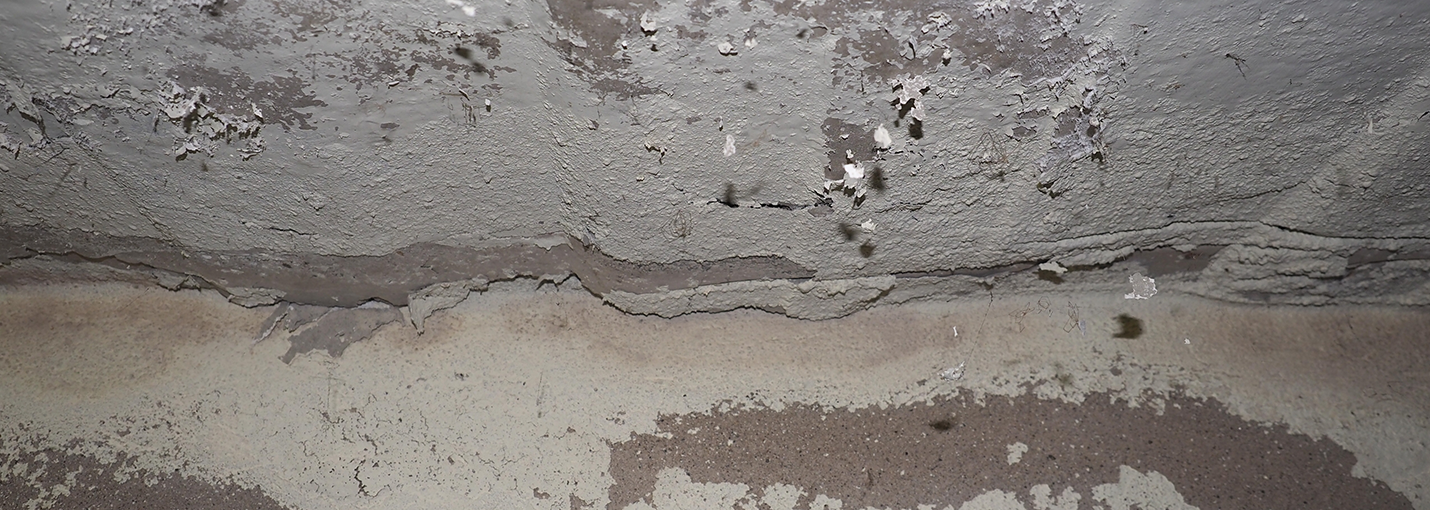Old Asbestos Insulation
There is a chance that asbestos was used in insulation lurking in a home or in another building an individual may frequent if it was constructed prior to the mid-1980s. Strong and resistant to fire, asbestos insulation was highly sought after for most of the 20th century.
Particularly in older homes, asbestos can be present in a wide variety of building components. These include pipe insulation, flooring glue, roof shingles, floor and ceiling titles and in many other places. Insulation for attics and walls is typically made of asbestos, too, making this protective barrier one of the most prevalent construction materials to contain the mineral.
Due to the dangers of asbestos, it has now been widely banned in the construction world, but it is still lurking in buildings that haven’t been updated.
!
If you believe that you were exposed to asbestos, even as a child, speak to a healthcare provider about tests and screening to help diagnose lung-scarring and screen for asbestos-related diseases.
What Is Asbestos Insulation?
Asbestos refers to a collection of natural fibrous minerals. Due to its superior tensile strength, low heat conductivity, and resistance to chemical reactivity, asbestos was very valuable for a variety of applications. Buildings were commonly insulated with asbestos-containing materials used in roofing materials, water supply lines, and more, and raw forms of different varieties of asbestos can have quite different appearances.
“The overall evidence suggests there is no safe level of asbestos exposure.”Source: National Cancer Institute (NIH)1 |
What does asbestos insulation look like?
Asbestos insulation may be white, brown, blue, dull green, gray, and even translucent. It is also possible for the mineral to differ with regards to its fibrous appearance depending on the type of asbestos used. Nowadays, it is common knowledge that asbestos is extremely hazardous since it may lead to serious illnesses after exposure. Yet, while the U.S. greatly restricts its use today, it has yet to ban it entirely.
 |
| Nearly every building constructed before the mid-1980s contained asbestos products and building materials. |
 |
Why Use Asbestos?
The use of asbestos came about due to the fact that it possesses certain qualities that make it an excellent material for use in construction. These characteristics include being an adept sound and heat barrier that is an incredibly strong and low-cost option, and one that is able to withstand high temperatures as was a hold up against water, chemical, electrical and fire exposure. It has ideal qualities for use construction, which accounted for its widespread adoption.
Asbestos was not only used in insulation but in the production of a wide variety of goods, including vinyl floor tiles, shingles on garage roofs, automobile parts, and household items such as hair dryers and craft supplies. When combined with other materials such as in concrete or brickwork, asbestos fibers produce a substance that is extraordinarily durable.
“Some asbestos fibers may bypass…your body’s natural defenses…and lodge deep within your lungs. Those fibers can remain in place for a very long time and may never be removed.”Source: American Lung Association |

Asbestos and Its Dangers
While today, the dangers of asbestos exposure are relatively common knowledge, in the past, its health-related consequences hadn’t been well-known. Because of this, it’s still likely that asbestos insulation is lingering in the walls and ceilings of older structures. While contained fibers aren’t dangerous, once older buildings begin to wear, these fibers can be released into the air and ingested. Exposure, and even secondhand exposure, to the substance can cause a lot of illnesses, most of which are life-threatening. Some of these include:
Asbestosis, which is a condition characterized by scarring and a hardening of the lung tissue.
Mesothelioma.
Pleural thickening, where the lung lining thickens and swells.
Cancers of larynx and ovaries.
Cancers of the stomach, colorectum, and pharynx.
| Asbestos causes cancer. Health researchers are learning how. Studies show that asbestos fibers embed in the bodily tissue:
|
Asbestos Abatement
Asbestos abatement refers to the process of legally and safely removing asbestos from a property. There are companies, known as asbestos abatement contractors, that are licensed to remove and dispose of the mineral properly. These companies have PPE equipment, expertise, training, and tools necessary to do it right the first time.
Because of this, the removal of asbestos should only ever be done by a reputable business that possesses both extensive experience and appropriate licensing.
| Asbestos is highly resistant to heat, pressure and corrosion, so it was used in many products, vehicles and buildings. In particular, many workplaces like factories, refineries, foundries and shipyards involve high amounts of heat, and were built with a lot of asbestos. | |||
 |  |  |  |
Proper abatement of asbestos is critical.
Abatement that is not performed correctly may have catastrophic results. Asbestos fibers have the potential to become airborne when handled improperly. Thus, to avoid asbestos exposure, it is critical to handle asbestos in a safe manner. To ensure compliance with state and federal regulations, specialists in the abatement industry get extensive training. Abatement professionals are required to obtain extensive training and accreditation by the Environmental Protection Agency (EPA).
Several health studies have shown that the spouses of asbestos workers are at an elevated level of risk for asbestos illnesses like lung cancer.2 3 4 5
Regulations Regarding the Handling of Asbestos
Anyone involved with the management of asbestos-related products must comply with a number of federal and state standards. These laws are enacted with the intention of preventing asbestos exposure in the general population. There are some regulations that only apply in particular places and in certain kinds of buildings. Other regulations have the overarching goal of completely shielding individuals from undue danger. The following are some of the regulations governing the handling and use of asbestos:
The Asbestos Hazard Emergency Response Act (AHERA)
The Asbestos Hazard Emergency Response Act (AHERA) is a law that was implemented by the EPA to address the presence of asbestos in educational institutions. According to AHERA, institutions are required to conduct routine facility inspections to look for the presence of asbestos-containing materials such as insulation. Educational establishments are obligated to have a strategy in place to readily mitigate potential health risks posed by exposure to the mineral.
“Generally, those who develop asbestos-related diseases show no signs of illness for a long time after exposure.”Source: National Cancer Institute (NIH)6 |
The National Emissions Standards for Hazardous Air Pollutants (NESHAP)
NESHAP was developed by the EPA to lessen the quantity of airborne asbestos that is present when construction is taking place. This mainly includes projects involving demolition and rehabilitation work. The requirements make certain that there is an acceptable level of cleanliness all around the construction site.
Asbestos has no taste or smell.
You may not know you’re breathing it.

Occupational Safety and Health Administration (OSHA)
The Occupational Safety and Health Administration (OSHA) provides specialized laws for different areas of industry, including construction, shipbuilding, and manufacturing. As part of these laws, OSHA set Permissible Exposure Limits (PEL) for workers who could be exposed to asbestos. In addition, OSHA mandated the implementation of medical surveillance procedures for employees who were exposed to asbestos. These requirements include medical monitoring and recording mandates associated with exposure.
Over $30 Billion is still available (No lawsuit. No fees unless you receive money. No risk.) Stake your claim.  |
Conclusion on old asbestos insulation
According to research, there is no such thing as an acceptable degree of asbestos exposure. Worthy of note is the fact that if insulation is old, it does not always indicate that it poses a threat, but it’s better to be safe than sorry.
Do You Qualify For Compensation?
Quickly and easily find out how you were exposed by searching W.A.R.D., the largest asbestos database on the planet.
FREE SEARCH >That’s why it’s always best to have any suspicious areas tested by a licensed asbestos abatement contractor before insulation is handled. Asbestos should only be inspected and removed by trained personnel who have relevant qualifications to reduce the risk of exposure.
AsbestosClaims.Law
At AsbestosClaims.Law, our mission to secure compensation for asbestos victims is more than professional; it’s personal.
Our founder, Justinian C. Lane, understands the devastating impacts of asbestos firsthand.
Both his grandparents and father, all asbestos workers, passed away from asbestos-induced cancers without realizing their eligibility for asbestos lawsuits or other forms of compensation.
We aim to prevent such tragic oversights by informing and guiding victims and their families through their legal options.
If you or your loved ones have suffered as a result of asbestos exposure, you could be eligible for considerable compensation. These funds could provide for medical treatments, asbestos removal services, and safeguard your health.
In addition, asbestos trusts offer compensation without the need for a lawsuit, providing a quicker, simpler path to justice.
Reach out to us at [email protected] or (206) 455-9190 for assistance with your claim. We offer compassionate listening, clear explanations, and we don’t charge a dime unless we win your case.
Beyond legal claims, we also advise on veterans’ disability, social security, and employment protection like workers’ compensation, FELA, and The Jones Act for maritime workers.
There’s no risk or cost to connect with our experienced team about your rights. Our commitment to your well-being means no fees unless you receive compensation.
| For further queries or concerns about asbestos, explore our website and YouTube page, featuring infographics, videos, and answers to common questions on asbestos-related topics. |
We’ve also introduced W.A.R.D., the Worldwide Asbestos Research Database. It’s the most comprehensive resource for asbestos-related information.
W.A.R.D. assists in pinpointing potential exposure scenarios, asbestos-containing products, and can indicate the types and potential amounts of compensation you may be entitled to receive.
Don’t delay — get in touch with us today!
Scholarly Reference: Toward an Asbestos Ban in the United States., Int J Environ Res Public Health. 2017 Oct 26;14(11):1302. doi: 10.3390/ijerph14111302. PMID: 29072598; PMCID: PMC5707941.1 National Cancer Institute (NIH), Asbestos Fact Sheet.
2 Ferrante, D., Bertolotti, M., Todesco, A., Mirabelli, D., Terracini, B. and Magnani, C., 2007. Cancer mortality and incidence of mesothelioma in a cohort of wives of asbestos workers in Casale Monferrato, Italy. Environmental Health Perspectives, 115(10), pp.1401-1405.
3 Miller, A., 2005. Mesothelioma in household members of asbestos‐exposed workers: 32 United States cases since 1990. American journal of industrial medicine, 47(5), pp.458-462.
4 Reid, A., Heyworth, J., De Klerk, N. and Musk, A.W., 2008. The mortality of women exposed environmentally and domestically to blue asbestos at Wittenoom, Western Australia. Occupational and environmental medicine, 65(11), pp.743-749.
5 İşten, B.H.S.T.O. and Maruziyetler, E.T., 2021. Exposures Moved from Work to Home as a Public Health Hazard.
6 National Cancer Institute (NIH), Asbestos Fact Sheet.